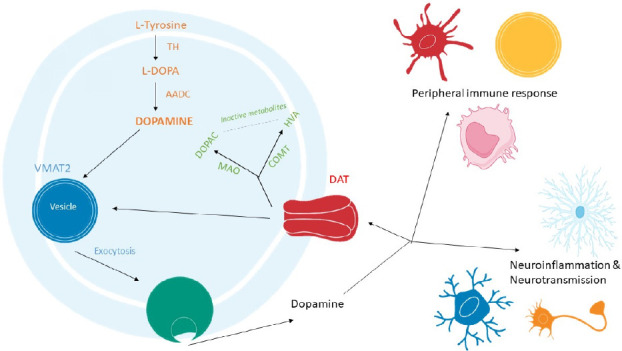Figure 2.

Dopamine biosynthesis, storage and metabolism pathways.
Dopamine is derived from the hydroxylation of L-tyrosine by the rate limiting enzyme, tyrosine hydroxylase (TH), forming l-3,4-dihydroxyphenylalanine (L-DOPA), which is then de-carboxylated by the aromatic amino acid decarboxylase (AADC) to form dopamine (orange). Dopamine is stored in vesicles through vesicular monoamine transporter 2 (VMAT2) and in neurons upon stimulation dopamine is released via exocytosis (blue). Dopamine is taken up by cells via the dopamine transporter (DAT) (yellow). Once dopamine re-enters the cell it can be incorporated back into vesicles by VMAT2 or dopamine can be inactivated through several metabolic pathways including oxidative deamination by monoamine oxidase (MAO) or by O-methylation by catechol-O-methyltransferase (COMT), leading to the formation of two catabolic products, 3,4-dihydroxyphenylacetic acid (DOPAC) and homovanillic acid (HVA) respectively (green).
